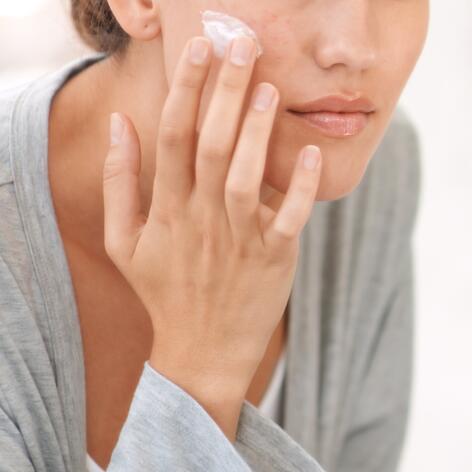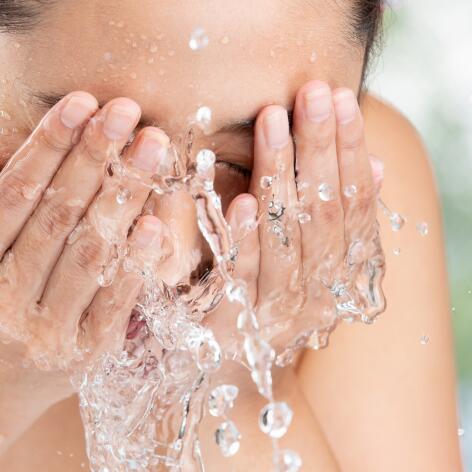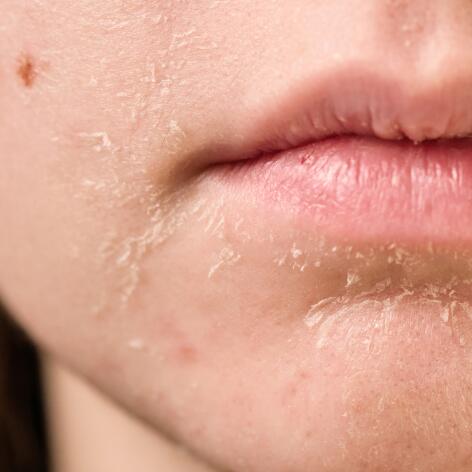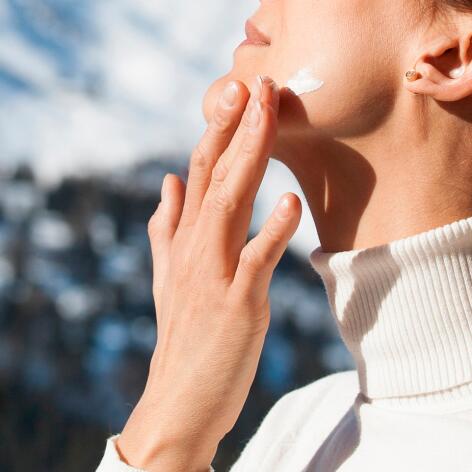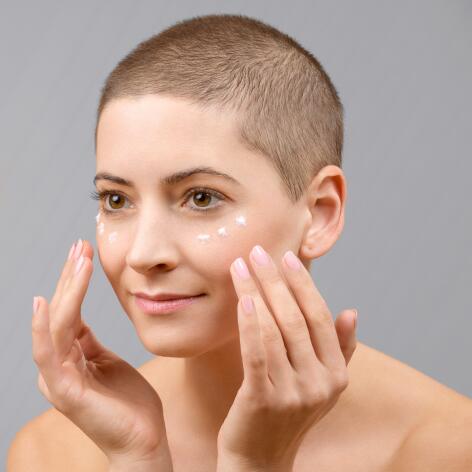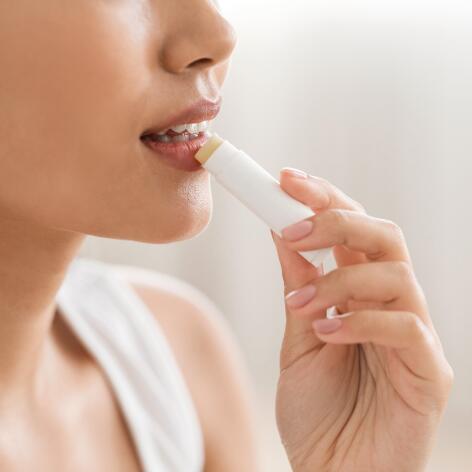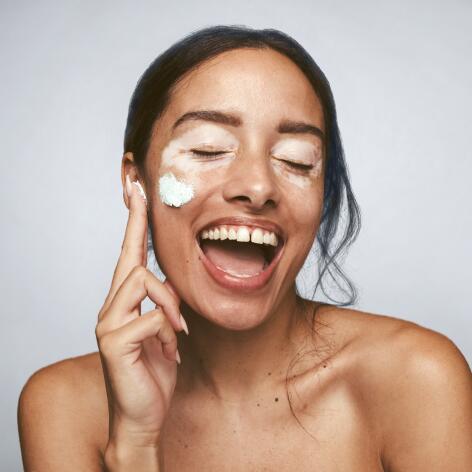- SUMMARY
- Make-up
What make-up to use for your skin type
- What make-up to use for your skin type
- Make-up for sensitive skin
- Make-up for skin weakened by cancer treatments
- How do you apply make-up to dehydrated skin?
- How do you apply make-up to oily skin?
- Make-up for atopic skin
- Make-up for acne-prone skin
- How do you apply make-up to dry skin?
- Make-up for vitiligo and white patches
What make-up to use for your skin type
Whether they are dry, oily or acne-prone, whether they are weakened by medication, atopic or with vitiligo... all skin types can be enhanced by make-up. Make-up can even help improve the image and self-confidence of even the most sensitive skin. Not sure which products to choose? Don't know how to do it right? Here are all our tips for your skin type.
Why should you adapt your make-up to your skin?
Every woman has her own skin type. Their make-up must therefore be adapted. Because if poorly chosen or poorly applied, it can have the opposite effect to that intended. It can thus accentuate skin fragility or bring out small defects. Thus, we do not apply make-up in the same way if we have oily or dry skin. For the former, light textures should be preferred, while the latter need a creamy consistency.

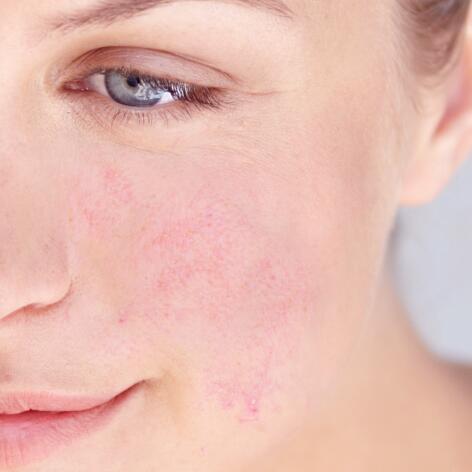
Making up sensitive skin
Your skin is itchy, it reacts excessively to wind, cold, unsuitable products, overly vigorous washing, water that is too hard... It’s probably sensitive and needs to be treated gently. Cosmetic products are no exception to this rule as they are not always suitable. So your skin will need to be soothed morning and night with the help of "high tolerance" products. Once softened, it will be ready for make-up application, which must be designed for "sensitive skin", fragrance-free and must be easily removable to avoid tightness or redness. Here all our tips.
Applying make-up to oily skin.
Making up oily skin is not always easy. The make-up does not hold, the skin shines and the products are not always suitable. But rest assured, we’re here to make your life easier. From the choice of non-comedogenic cosmetics, to the importance of removing your make-up morning and night, to our advice on how to mattify your complexion and make your make-up last longer, we explain everything.

I love wearing make-up. Between the kids, work, and home, it's one of the few times in my day when I can take care of myself without thinking about anything else.
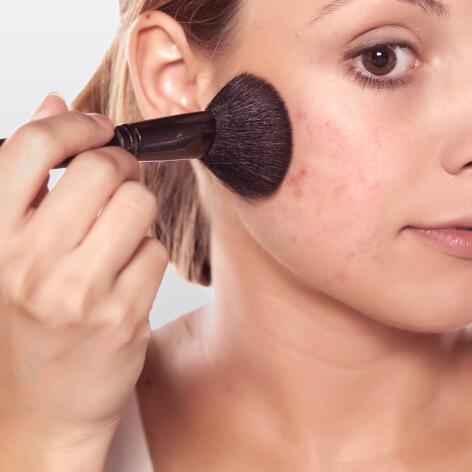
Make-up for acne-prone skin.
For acne-prone skin, make-up is a precious ally, but only if it is non-comedogenic. It consists of two key actions: evening out the complexion and concealing imperfections. In short: to make you forget your acne and give you back your self-confidence. How to achieve a natural result? What daily routine should you adopt? Follow our step-by-step advice.
Make-up for dry skin.
Dry skin is common in women, especially after menopause. The skin is often thin, with a tight texture. It must therefore be moisturised to restore the hydrolipidic film. The choice of high-tolerance, skin-friendly products is essential in order not to further damage the already fragile skin barrier. Cosmetic gestures should be gentle. From moisturising to make-up and make-up removal, we tell you everything.
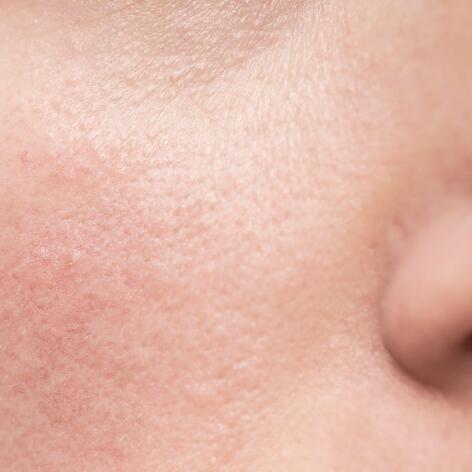
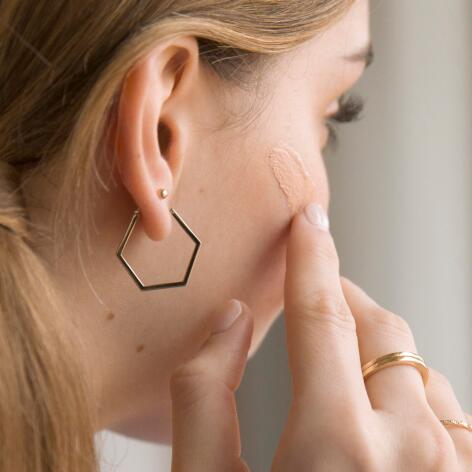
Make-up for dehydrated skin
Dehydrated skin is skin that is terribly thirsty for water. It's not always easy to keep your make-up on under these conditions. And some flaws, such as dehydration marks, appear magnified under a magnifying glass. Your first task will therefore be to give your skin something “to drink”. To help you, Hydrance Intense Rehydrating Serum is a real concentrate of thermal spring water. Then, the goal of your make-up will be to restore your healthy glow. Follow our guide.
Make-up for atopic skin.
Atopic skin is highly reactive, prone to redness, dryness and scaly patches. This is atopic eczema. Make-up, if not adapted, can aggravate skin lesions or cause new irritations or even allergic reactions. Do you want to conceal inflamed areas while still looking natural? This is what corrective make-up can help you achieve. So here's how to even out your skin tone safely and gently.
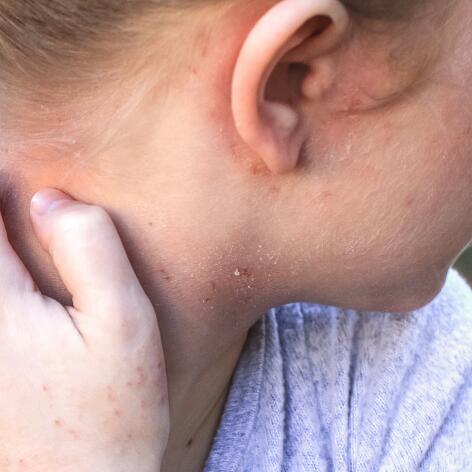
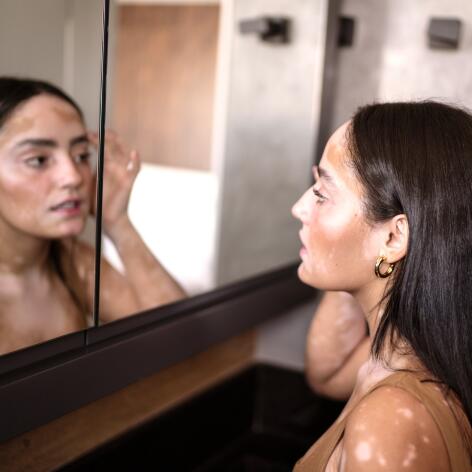
Make-up for vitiligo and white spots.
Localised white spots on the face, hands or other areas of the body. Vitiligo is a pigmentation disorder. Here again, make-up can help restore your self-confidence. But this should not be a constraint and should be easily achievable. From the right sun protection to the right shade, here are our tips for a natural result (and to avoid a "cakey" effect)
Make-up for skin weakened by cancer treatments.
Cancer treatment is accompanied by adverse effects on the body and skin of patients. Dry skin, redness... In this case, corrective make-up can provide you with multiple benefits: it allows you to feel feminine during treatments, to erase signs of fatigue, to reshape your eyebrows as well as to camouflage scars. We’re here for you during these difficult times.
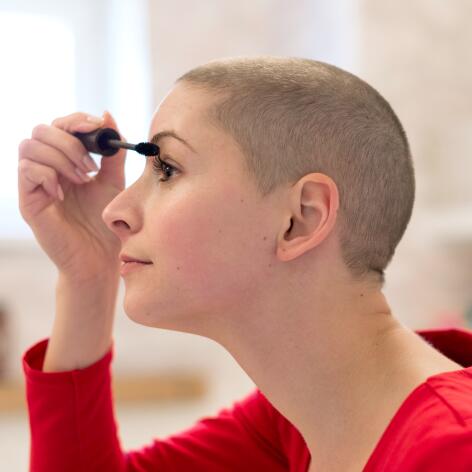
FRIENDLY (AND EXPERT) ADVICE
After make-up comes make-up removal!
There’s no make-up without make-up removal: with your fingers or with a cotton pad, depending on the sensitivity of your skin; with a micellar lotion, a milk cleanser or a cleansing foam... Don't forget this essential step to rid your skin of impurities before leaving it to regenerate during the night One last argument should convince you: note that not removing make-up accelerates skin ageing and intensifies skin problems, pimples, blackheads, dryness, dehydration...
OUR ANSWERS TO YOUR QUESTIONS
Make-up by skin type: we’re here to help you sort fact from fiction.
True and false. Fortunately, you don't have to ban running water for your daily hygiene routine. But listen to your skin. If it is tight, it is probably because your tap water is too "hard". In this case, there are alternatives for your face, such as thermal spring water sprays.
This is false. Oily skin can also be dehydrated. It must therefore be cleansed and moisturised daily with specific products that will also regulate sebum production.
This is false. Men can also benefit from it, particularly to hide seborrhoeic dermatitis, rosacea, acne breakouts, etc. A little bit of liquid concealer will camouflage the small flaws in a natural way. Tap locally with a sponge and your spots will be hidden.
True. The wrong make-up for your skin type can make your eczema flare-up worse by increasing skin irritation, causing an allergic reaction or increasing skin dryness. Avoid using make-up if the skin is damaged or oozing. And in any case, opt for high tolerance make-up products for sensitive skin.
COUVRANCE
A range of corrective treatments to correct all types of imperfections.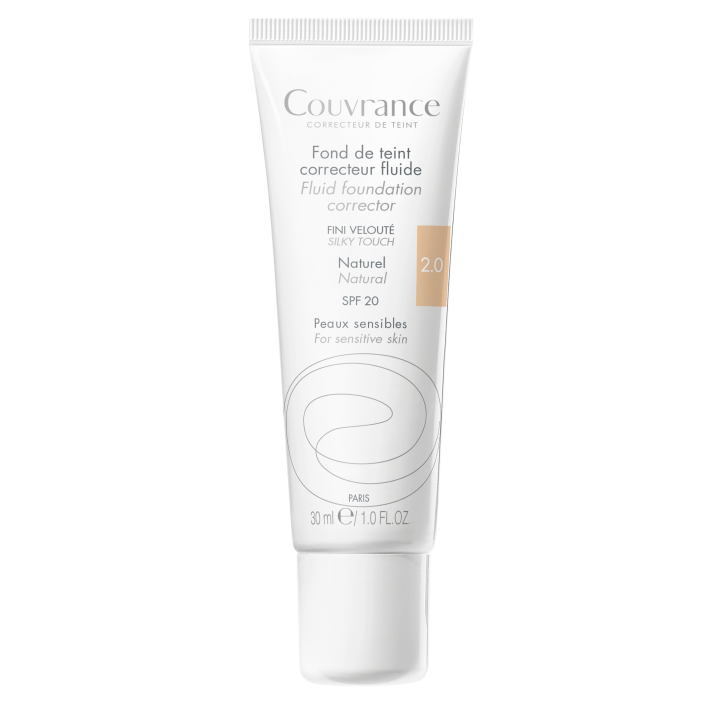
Fluid foundation corrector
It gives me a perfect complexion, without looking too thick and without drying out the skin! I had allergic reactions with other brands—that's over thanks to Avène!
MORE
NEWSLETTER
We're always here for your skin!
All our tips for taking care of your skin day to day.
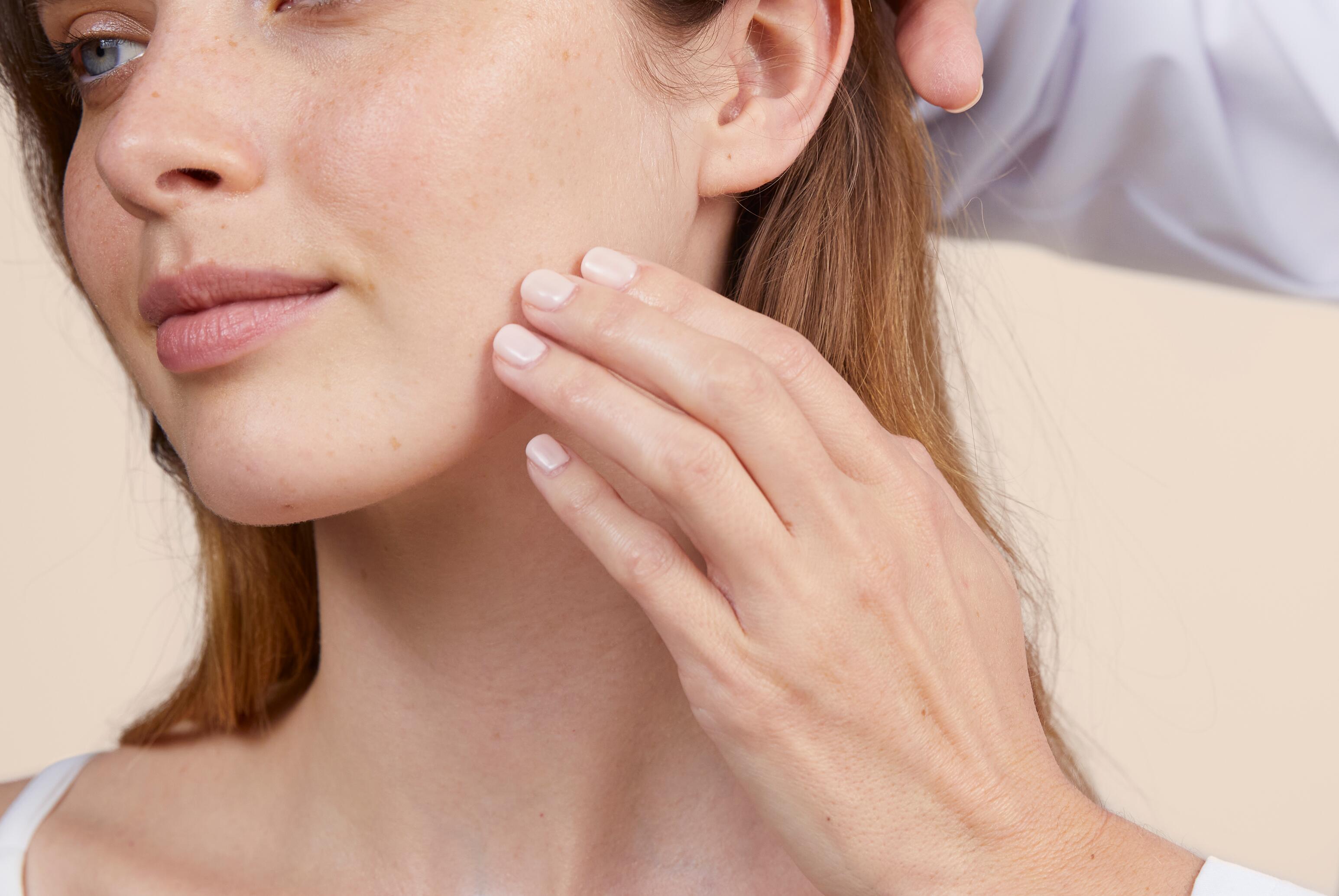
Which skin care routine should you adopt?
Identify what it really needs with the help of our experts and discover the most suitable skin care routine for you.


